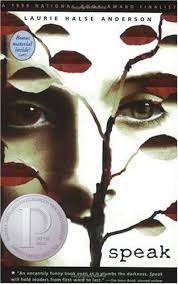Assimilation and identity
The late missiologist Paul Hiebert, together with Young Hertig, has an interesting though dated (1993) article on Asian immigrants in urban cities, with particular reference to North America. They examine the issue of identity and assimilation, suggesting that the core question is: to which culture does the immigrant really belong? Each generation after immigration approaches and answers this in a different way.
So why am I blogging about all this? There's the personal side, of course: I have often wrestled with questions such as this partly due to my upbringing, my family and educational background, the friends that I have, and of course, as someone involved in ministry with international students in a Western country. And because I just wanted to see if I could stimulate some thoughts from my readers, and the article above provides some important intercultural, and indeed, intergenerational insights which are relevant for the Malaysian context, although obviously we are very different in many ways. I think, for example, of the differences between English and Chinese-educated Chinese and the questions of trying to "preserve" a culture versus the "interaction" of cultures. Or the often frustrating family dynamics that those of us who are younger struggle to decipher - why are parents always so obtuse? (Apologies for the examples being obviously Chinese, that's my makeup). Or the wider politics of race and racial discourse - would you describe yourself as Malaysian or Malay/Indian/Chinese/Bumiputra/Iban/Kadazan/Martian first? I actually assert my "Malaysianness" more, I think, but I know others will differ from me.
Some might take exception to using an article on the "immigrant experience" to draw parallels to the Malaysian situation, since "immigrant" itself is a contested term in Malaysia. A big number of us will resent being labelled as pendatang, as if we were 2nd class citizens. That, of course, is to miss the point. It's simply a historical fact that many of us will have ancestors who at some point immigrated to what we now call Malaysia. I know we live in a plural society, so I wonder if we're not so much assimilating into a clearly marked majority/mainstream culture as forging a distinctively "Malaysian" culture, although again what that is is up for debate. How do you compare Sino-Kadazans in Sabah with the Nyonyas in Malacca? But maybe again the lack of flattening is a good thing. It means we're more aware that we all have particular categories and assumptions that affect how we view the world.
Plus, these are questions, I am convinced, we need to reflect on as Malaysian Christians, especially as it impacts on things like pastoral practice, evangelism and so on. It also challenges us to consider afresh what it means to consider ourselves to be Christians first and foremost, to be sojourners in this age. As Tim Kellers notes:
† Expand post
1. First generation - clear sense of identity. That is, their identity is very much tied to their "home" culture. They might develop survival skills to cope in the new culture, but their values, beliefs, things & events they find significant etc., are those of "home". If women come from patriarchal cultures, they are unlikely to be exposed much to the new culture, from staying at home etc., and so are often isolated.Also, at a deeper level, language becomes an issue. Hiebert and Hertig quote Cheryl, a Korean teenager in LA: "I try to speak Korean when I talk with my mother, but the most important emotional stuff I say in English because I cannot express it in Korean. So my mother does not have any idea what I am trying to say. It is really frustrating. I don't understand why she does not try to learn English. She has lived here almost twenty years." I think a few of us Malaysians will share similar experiences.
2. 2nd generation - deep identity crisis. They encounter schizophrenia, for at home and within the family, they absorb certain values and beliefs, but in school and public are enculturated into the new culture. So you have a clash, with this generation often having to make decisions about how much to take on board parental values, resulting either in withdrawal, rebellion, or more likely, compartmentalization. The best case scenario is if one is able to integrate the best of both worlds. Add in other factors such as the different paces at which siblings within a family might assimilate and it gets even more complicated. One critical factor in the assimilation of second generation young people is the attitude of their parents. Other factors like social mobility etc. all count for something too.
3. 3rd and 4th generation - assimilation and appreciation. Here the identity crisis is not so acute, because they have figured out their place in society more, whether by carving out a niche for themselves or completely assimilating. But when we get to 4th/5th generation, we find that some begin to seek their roots once more, especially if their racial features are more distinct. Here we may find the problem of "hidden immigrants" - eg. looking Chinese on the outside but born and bred in America, and so actually being completely different culturally.
So why am I blogging about all this? There's the personal side, of course: I have often wrestled with questions such as this partly due to my upbringing, my family and educational background, the friends that I have, and of course, as someone involved in ministry with international students in a Western country. And because I just wanted to see if I could stimulate some thoughts from my readers, and the article above provides some important intercultural, and indeed, intergenerational insights which are relevant for the Malaysian context, although obviously we are very different in many ways. I think, for example, of the differences between English and Chinese-educated Chinese and the questions of trying to "preserve" a culture versus the "interaction" of cultures. Or the often frustrating family dynamics that those of us who are younger struggle to decipher - why are parents always so obtuse? (Apologies for the examples being obviously Chinese, that's my makeup). Or the wider politics of race and racial discourse - would you describe yourself as Malaysian or Malay/Indian/Chinese/Bumiputra/Iban/Kadazan/Martian first? I actually assert my "Malaysianness" more, I think, but I know others will differ from me.
Some might take exception to using an article on the "immigrant experience" to draw parallels to the Malaysian situation, since "immigrant" itself is a contested term in Malaysia. A big number of us will resent being labelled as pendatang, as if we were 2nd class citizens. That, of course, is to miss the point. It's simply a historical fact that many of us will have ancestors who at some point immigrated to what we now call Malaysia. I know we live in a plural society, so I wonder if we're not so much assimilating into a clearly marked majority/mainstream culture as forging a distinctively "Malaysian" culture, although again what that is is up for debate. How do you compare Sino-Kadazans in Sabah with the Nyonyas in Malacca? But maybe again the lack of flattening is a good thing. It means we're more aware that we all have particular categories and assumptions that affect how we view the world.
Plus, these are questions, I am convinced, we need to reflect on as Malaysian Christians, especially as it impacts on things like pastoral practice, evangelism and so on. It also challenges us to consider afresh what it means to consider ourselves to be Christians first and foremost, to be sojourners in this age. As Tim Kellers notes:
"Identity is a complex set of layers, for we are many things. Our occupation, ethnic identity, etc., are part of who we are. But we assign different values to these components and thus Christian maturing is a process in which the most fundamental layer of our identity becomes our self-understanding as a new creature in Christ along with all our privileges in him."OK, I've rambled with no clear direction for long enough. Comments welcome. For more on the migrant experience, I can think of no better teacher than the short stories of Jhumpa Lahiri. For an intro to cross-cultural issues, try Sarah Lanier's From Foreign to Familiar or some of Duane Elmer's books.
† Expand post
Labels: culture, Malaysia, personal reflections, race












Post a Comment
<< Home